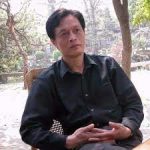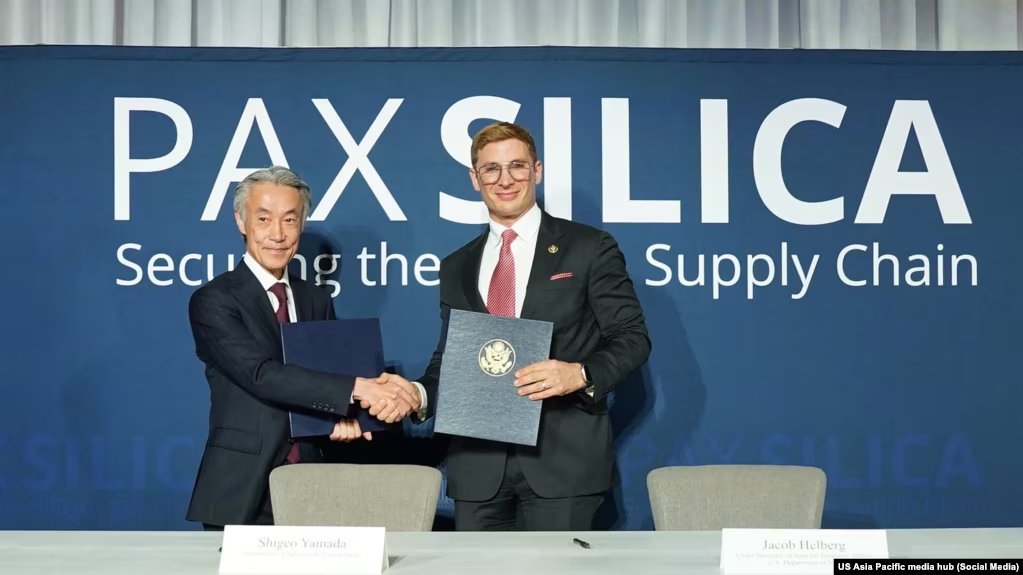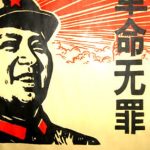Oct. 26, 2012 2:48 p.m. ET
It is difficult to look dispassionately at some 45 million dead. It was not war that produced this shocking number, nor natural disaster. It was a man. It was politics and one man’s vanity. The cause was famine and violence across rural China, a result of Mao Zedong’s unchecked drive to turn his country rapidly into a communist utopia and a leading industrial nation.
The dead were in effect victims of Mao’s determination, at the end of the 1950s, to push the Soviet Union off its perch as leader of the world communist movement following Nikita Khrushchev’s denunciation of Stalin. Khrushchev had boasted in May 1957 that the Soviet Union would overtake the United States as the world’s leading industrial and agricultural power within 10 years. Mao sought a similar goal for China, but over a much shorter period. In “Tombstone,” Yang Jisheng quotes the words of Mao, which became a rallying call: “go all out, aim high, and achieve greater, faster, better and more economical results in socialist construction.”

Closely monitored by the authorities Ganzu province. Yumen. 1958. Whatever the city, whatever the region, the sound of drums and cymbals announces a workers delegation marching to administration headquarters to tell of a new high in their production. Oil workers from the Petrol Combine, whose production has jumped 200% in the past ten years. Henri Cartier-Bresson/Magnum Photos
Tombstone
By Yang Jisheng
Farrar, Straus & Giroux, 629 pages, $35
The Great Famine in China, 1958-1962
Edited by Zhou Xun
Yale, 204 pages, $45
In 1958, Mao launched the “Great Leap Forward,” a manic and coercive mobilization of China into “Peoples Communes”—giant collective farms and administrative units. Almost overnight, China was transformed into 26,000 communes. Armies of peasants, prisoners and city dwellers were dragooned to build vast power and irrigation projects that were either not completed or were improperly constructed and failed. The countryside was militarized and regimented into work battalions and work brigades.
Deep Inside China’s Heart of darkness
To mark the 50th anniversary of the famine’s end, Zhou Xun, a professor at the University of Hong Kong, has compiled a selection of key reports. ‘The Great Famine in China, 1958-62: A Documentary History’ is a journey into China’s heart of darkness.’
‘
—Michael Fathers
‘
1958: from a report on food shortages and riots in 16 provinces’
‘Shandong: Since the end of March over 670,000 people have had their food supplies completely cut off, and over 150,000 people have been forced to flee and become beggars. . . . Guangdong: The famine in the spring caused 963,231 people to go without food and seven people have died. . . . Gansu: Severe famine has become prevalent, and people have been eating tree bark and grass roots to satisfy their hunger.’
1961: from a report by a regional party committee in Sichuan
‘In this commune, from the winter of 1959 to the spring of 1960, about 2,357 people died, which is 14.5 percent of the total population. Of those who died, 40 were beaten to death, and 32 were forced to commit suicide. More than 300 were deliberately starved to death. Some of them were not given anything to eat for more than half a month.’
1961: from a study of 40 cases of cannibalism in Gansu Province
‘February 17, 1960. Location: Nansheng big production brigade in Hongtai commune. Culprit’s name: Yang Shengzhong. Victim’s relation to the culprit: Son. Number of victims: 1. Manner of crime: Cooked the victim’s corpse and consumed the flesh. Reason: To survive.’
1961: from a report by the ‘rectification campaign’ team in Sichuan
‘[Communist Party] Cadres in this county regularly violate the law. They torture people by hanging them up, beating them, looting their houses and depriving them of food. They have even beaten and starved people to death. They have become completely lawless, and it is no longer possible to tolerate this.’
1962: from a report on the famine in Sichuan province
‘In Beifue district. . . all the banana trees in the People’s Park, the old people’s home in the district, and the local state farm have been ripped up and the roots consumed by hungry villagers . . . villagers forced their way into the compound of the county Party Committee and peeled the bark off all the trees and consumed it . . . In Jiangbei county, more than 27,000 villagers have been consuming “immortal earth” [clay] to assuage their hunger.’
Family kitchens were destroyed; even utensils were taken over by the commune or fed to “backyard furnaces” and melted down into useless iron lumps. All food was served in canteens and distributed according to merit; for the uncooperative, starvation was the punishment of first resort. When food ran out the canteen closed and peasants were left to scavenge.
Houses were knocked down to make way for gigantic piggeries that were often never completed. Inhabitants were left to sleep in the open; some moved in with the pigs. Doors, windows, lintels and wooden beams were ripped from homes to provide fuel for the backyard furnaces. If anything was held back, its owner was punished or tortured. “We can start communism with food, clothes and housing,” Mao declared. “Collective canteens, free food, that is communism.”
Communist cadres in the provinces competed for Mao’s attention and praise, striving to outdo one another with highly inflated estimates of harvests. Radical new planting techniques, supposed to yield massive amounts of wheat and other grains, were backbreaking failures or ruinous fakes.
On Khrushchev’s last visit to Beijing in 1958, before the split between the two communist giants became a chasm, Mao boasted to Khrushchev that China had more rice than its citizens could eat; his chief worry was how to deal with the surplus. In reality, the people were already starving.
By the end of 1958, as agricultural production fell sharply and government quotas were raised to fantastic levels, famine spread. In July 1959, at a conference of senior leaders at the hilltop resort of Lushan, China’s defense minister, Marshal Peng Dehuai, led a move to review the Great Leap Forward and to halt, or at least rein in, the drive to total collectivization.
Peng, a peasant hero and veteran of the communists’ revolutionary war, had visited his and Mao’s home province of Hunan and seen the suffering first hand. He would be destroyed by Mao, branded a “right deviationist” and the leader of an “anti-party clique.” From then on, any attempt to relieve the peasants’ suffering was crushed, as purges swept through the country.
The famine lasted until 1962, when Mao was finally outmaneuvered by his lieutenants, including China’s president Liu Shaoqi and the chairman of the State Planning Commission Li Fuchu. Liu Shaoqi, while not directly criticizing Mao, told a mass meeting of 7,000 leading cadres from across China that farmers believed their problems were due 30% to natural calamities and 70% to man-made disaster. In the words of Frank Dikötter, the leading historian of the Great Famine, “the very use of the term ‘man-made disaster’ was a bombshell, drawing gasps from the audience.” The communes were dismantled and China’s peasants were able to cultivate and grow and cook their own food once more. Harvests improved rapidly.
Mao never forgave his opponents for this affront. In his eyes Liu Shaoqi had become China’s Khrushchev, and Mao set about plotting his revenge. What followed, in 1966, was the “Great Proletarian Cultural Revolution,” a decade of anarchy and violence. The Communist Party was torn apart. Suspect leaders and cadres, along with their families, were crushed, or were killed, or were scattered to China’s remotest and impoverished regions. Liu Shaoqi was tortured and allowed to die.
For decades historians in the West believed the Cultural Revolution was modern China’s greatest trauma—the famine that came with Mao’s Great Leap Forward had been successfully hidden.
It was only after 1979, with Mao dead and the radical leftists that had surrounded him purged or in jail, that China’s open-door policy enabled academics and statisticians to investigate what the country had become after the Communist Party captured power in 1949. When limited access to population statistics was permitted in the 1980s, demographers caught a hint of the secret China had kept from the world.
The country’s leaders had told the world China was brimming with food and revolutionary prosperity. It lauded the Great Leap Forward and the benefits that came from communal life and the management of resources. It pointed to remarkable engineering feats using mass labor to build large-scale dams and canals and create new irrigated farmlands in former wastelands, and the scientific achievements made in cropping.
Abroad this propaganda was portrayed as fact. During the Great Leap Forward, fellow travelers were allowed to visit China on closely monitored tours of the countryside. Briton Felix Greene declared that death by hunger had ceased in China. The scientist and distinguished Cambridge University Sinologist Joseph Needham said it was nonsense even to think that peasants might be oppressed. He declared that communal kitchens, the most hated symbol of collectivization, were symbols of pride. Other prominent foreigners invited to China to be hoodwinked included Britain’s war hero Bernard Montgomery, and François Mitterrand, later to be elected president of France.
Setbacks were said to have been caused by droughts and floods. Some even put forward Mao’s China as a development model. The first president of newly independent Tanzania, Julius Nyerere, turned to Mao for inspiration, pushing thousands of small farmers into experimental collectives in the 1960s. These were as hated and economically useless as China’s. Similar moves were forced on Ethiopians in the 1970s by the young, radical colonels who had ousted and murdered Haile Selassie.
In the 1990s, the truth began to emerge for everyone outside China to see. Jasper Becker, a former correspondent in China for the Guardian, published “Hungry Ghosts: China’s Secret Famine” (1996)—the first accessible account of China’s man-made catastrophe. Readers were shocked by the estimate of the dead, the violence involved and the fear among the Chinese of speaking out, even 30 years afterward.
Scholars began a relentless and painstaking cat-and-mouse game, heading to provincial Communist Party offices, searching for copies of high-level documents on the famine that had been dispatched from Beijing and forgotten. In Beijing, the original documents are still closed to outside eyes in the party’s central archives. And important pieces of evidence are being covered up again: Some originals transcribed in Zhou Xun’s chastening documentary history, “The Great Famine in China, 1958-1962” (see sidebar) have since been reclassified by the Beijing authorities and vanished once more into closed files.
In 2010, Frank Dikötter produced “Mao’s Great Famine,” an authoritative account of the catastrophe, written with a bravura seldom seen in Western writing on modern China. Impassioned and outraged, Mr. Dikötter detailed the destruction, the suffering and the cruelty or hubris of China’s leaders. Sorting through forgotten and hidden documents with great intellectual honesty, Mr. Dikötter ended his journey pointing his finger directly at Mao, who notoriously said, as he called for higher grain deliveries from the countryside at the height of the famine: “It is better to let half the people die so that the other half can eat their fill.”
For the general reader, “Mao’s Great Famine” is unlikely to be bettered. “Tombstone” is something quite different, a condensed, yet magisterial 600-page edition of a densely detailed, two-volume Chinese-language account by Yang Jisheng, a retired Chinese journalist and Communist Party member.
The author lacks Mr. Dikötter’s narrative skills, and readers may find “Tombstone” heavy going at times. But as a researcher Mr. Yang steps carefully through the barrage of statistics and the acres of interviews he conducted. He ranges across China from devastated province to devastated province, in and out of the political struggles as Mao’s authority wanes and rises, the “leap-forward,” the “right-deviationist” campaigns, the propaganda battles, the mass mobilizations, the fawning and fear at the very top and the horror and death at the bottom. The panorama is enormous but it is often the detail that is most memorable.
As a teenager in 1959, Mr. Yang watched his father die of starvation. Years later, while working in a senior editorial post at Xinhua, China’s state-controlled news agency, he began his own search for the truth behind the famine. The author spent 20 years tracking down survivors across China and using his authority as a respected Communist cadre to access provincial archives. It was, in part, expiation for his shame in not questioning his father’s death.
As a young man Yang had been an ardent believer in Mao’s Great Leap Forward. “I harbored no doubts regarding the Party’s propaganda about the accomplishments of the Great Leap Forward or the advantages of the People’s Communes,” he writes. In his old age Mr. Yang reveals that the ceaseless mass criticisms and harsh punishments he witnessed during his youth instilled a feeling of dread, a dread that seeped into his psyche and fed his instinct for survival.
Mr. Yang concludes that Mao Zedong knew early on that his policies of extracting extortionate levels of foodstuffs from an impoverished countryside were killing millions. He uncovers the “arrest plans” and the quotas given to the police and militia for each province in dealing with those accused of speaking out against the Great Leap Forward and the regime. It was as if the quotas were political production targets. In 1958 Anhui province, a center of the famine, was given an “arrest quota” from the central government of 45,000 people. Officials surpassed the quota with 101,000 arrests. Many of those arrested died of starvation in labor camps.
There is no memorial anywhere in China to the victims of the famine, no public monument, no remembrance day. Graves are not marked and mass burial grounds have disappeared into the landscape. The famine’s very existence has been denied. The Communist Party will only admit to “food shortages” and “some difficulties” during the Great Leap Forward. They claim that these setbacks were a result of natural disasters.
Mr. Yang set about writing his book as a tombstone for his father and for every victim who had died from starvation. He was also erecting a tombstone for the system that brought about the Great Famine. First published in Hong Kong in 2008, Mr. Yang’s work is banned in China. The reason is clear: The book challenges the very foundation of the Communist Party’s authority. As China’s Communist Party chieftains gather later this year in Beijing to proclaim their self-given and unaccountable authority to govern, Chinese may wonder whether the lesson of the famine has been learned.
—Mr. Fathers is co-author, with Andrew Higgins, of “Tiananmen:
The Rape of Peking.”









